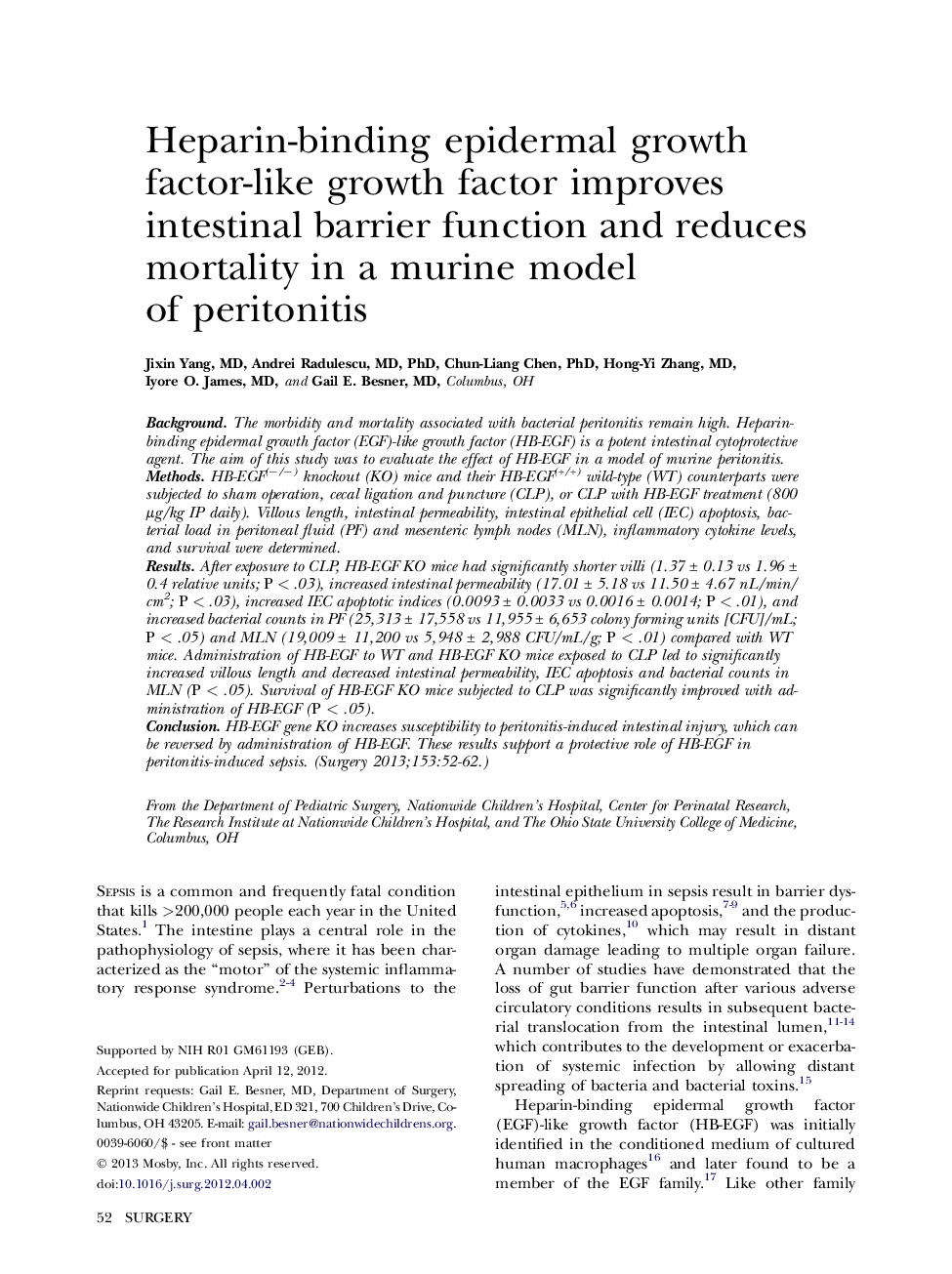| Article ID | Journal | Published Year | Pages | File Type |
|---|---|---|---|---|
| 4307688 | Surgery | 2013 | 11 Pages |
BackgroundThe morbidity and mortality associated with bacterial peritonitis remain high. Heparin-binding epidermal growth factor (EGF)-like growth factor (HB-EGF) is a potent intestinal cytoprotective agent. The aim of this study was to evaluate the effect of HB-EGF in a model of murine peritonitis.MethodsHB-EGF(−/−) knockout (KO) mice and their HB-EGF(+/+) wild-type (WT) counterparts were subjected to sham operation, cecal ligation and puncture (CLP), or CLP with HB-EGF treatment (800 μg/kg IP daily). Villous length, intestinal permeability, intestinal epithelial cell (IEC) apoptosis, bacterial load in peritoneal fluid (PF) and mesenteric lymph nodes (MLN), inflammatory cytokine levels, and survival were determined.ResultsAfter exposure to CLP, HB-EGF KO mice had significantly shorter villi (1.37 ± 0.13 vs 1.96 ± 0.4 relative units; P < .03), increased intestinal permeability (17.01 ± 5.18 vs 11.50 ± 4.67 nL/min/cm2; P < .03), increased IEC apoptotic indices (0.0093 ± 0.0033 vs 0.0016 ± 0.0014; P < .01), and increased bacterial counts in PF (25,313 ± 17,558 vs 11,955 ± 6,653 colony forming units [CFU]/mL; P < .05) and MLN (19,009 ± 11,200 vs 5,948 ± 2,988 CFU/mL/g; P < .01) compared with WT mice. Administration of HB-EGF to WT and HB-EGF KO mice exposed to CLP led to significantly increased villous length and decreased intestinal permeability, IEC apoptosis and bacterial counts in MLN (P < .05). Survival of HB-EGF KO mice subjected to CLP was significantly improved with administration of HB-EGF (P < .05).ConclusionHB-EGF gene KO increases susceptibility to peritonitis-induced intestinal injury, which can be reversed by administration of HB-EGF. These results support a protective role of HB-EGF in peritonitis-induced sepsis.
